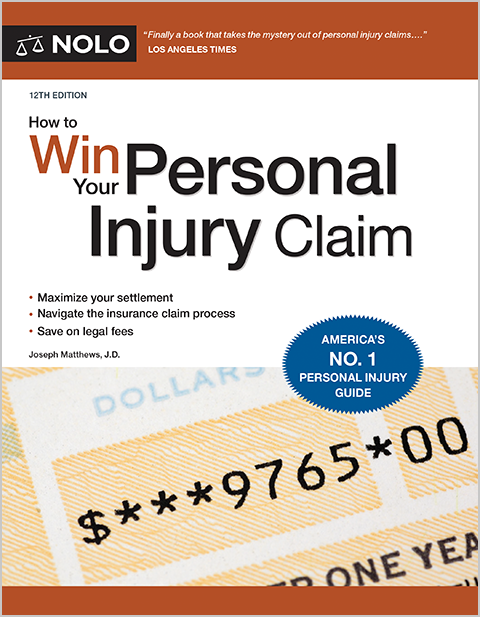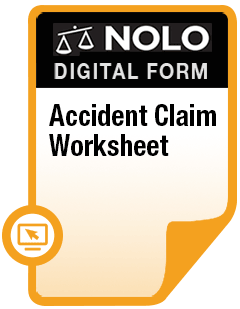Find out what to expect during your asbestos case, including the kind of claim you have, how much time you have to file, how long it will take to get paid, and more.
You were exposed to asbestos and you've been diagnosed with an asbestos-related health problem like mesothelioma. Now unable to work, you're wondering how you'll pay the bills and provide for your family. Can you get compensation through an asbestos claim or lawsuit?
The answer is: Probably yes, but the process will take some time. If your claim ends up in court, it's also going to be expensive, though you'll likely find a lawyer who will pay the expenses up front and recoup them when your case is over.
We begin with the factors that decide whether you're likely to have a viable asbestos-injury claim and if so, how much time you have to file it. From there, we'll discuss how long you should expect the claim or lawsuit process to take. We'll also talk about some of the witnesses you might need to prove your case. We close by explaining why you should have an experienced asbestos injury lawyer handle your claim or lawsuit.
Do You Have an Asbestos Injury Claim?
This is the crucial threshold question. You'll want a lawyer to review the facts and give you advice specific to your circumstances. In general, though, there's a good chance you have a viable case—and can get compensation for your injuries and losses (called "damages")—if:
- you have a history of working with or around asbestos, or
- you lived, went to school, or spent significant time in places where asbestos-containing products have been found, and
- you've been diagnosed with asbestosis, mesothelioma, or another asbestos-related illness.
The kind of claim you have—and how you'll bring it—depends almost entirely on the company you're going after (called the "defendant") and where you were exposed to asbestos.
How Do You Bring an Asbestos Injury Claim?
There are three ways to bring an asbestos injury claim:
- file a claim, called a "trust fund claim," with an asbestos-injury compensation fund
- file an insurance claim and, if settlement talks fail, follow with a lawsuit, and
- file a worker's compensation claim.
Depending on the facts, you might be able to pursue more than one kind of claim. Your lawyer will provide advice that's specific to your case.
Trust Fund Claims
Suppose you were employed for several decades as a brake repair specialist in an auto-repair shop. You worked with brake pads—products known to contain asbestos—almost every day. After being overwhelmed by asbestos-injury lawsuits, the brake pad manufacturer filed for bankruptcy three decades ago. The company has long since gone out of business.
Pursuant to an order of the bankruptcy court, the manufacturer set up an asbestos-injury compensation fund to pay the future claims of people who were injured by their products. If you want payment for your injuries from the brake pad manufacturer, you'll have to bring a claim against the company's injury compensation fund.
For asbestos-injury claims, this injury compensation fund scenario is quite common. Countless companies have filed for bankruptcy because of unmanageable asbestos liabilities. Federal bankruptcy courts have routinely conditioned bankruptcy relief on the company setting up an injury compensation fund.
Claims against these funds are known as "trust fund claims." To collect compensation from the bankrupt manufacturer or seller of an asbestos-containing product—when the manufacturer or seller wasn't also your employer—a trust fund claim is your only viable option.
Filing a Lawsuit
Now assume the same facts as in our example above, except that the brake pad manufacturer never declared bankruptcy and is still around. Filing a trust fund claim isn't an option. How do you bring a claim against the manufacturer?
To get paid for your injuries, you'll start with a claim against the company's liability insurer. You (or more likely, your lawyer) will negotiate with an insurance adjuster to reach a settlement. Most personal injury claims settle out of court, and that's also true for asbestos claims. But if you can't settle, your only path to recovery is to file a lawsuit in federal or state court.
Unfortunately, asbestos-injury victims can't file or join in class action lawsuits. Why? Because to be part of a class action, the facts of your case—including your injuries—must be substantially similar to those of every other person in the case (called "plaintiffs"). In asbestos cases, each person's work history, medical history, and prognosis is different, so cases must be filed individually.
Filing a Worker's Compensation Claim
Return once more to our example. What are your options when your asbestos-related illness results from an on-the-job asbestos exposure and you want compensation from your employer? Most often, your only route to recovery will be through a worker's compensation claim.
Ask your lawyer about whether you have any other options under your state's worker's compensation law.
You Might Have More Than One Claim
Depending on the facts of your asbestos-related illness, you might have more than one claim. In our example above, you have at least two: A worker's compensation claim against your employer, and a trust fund claim (or, if the company hasn't gone bankrupt, an insurance claim) against the manufacturer.
Let's extend the example a bit further. Suppose that you routinely worked with brake pads made by three different manufacturers. Now, you have a claim against each manufacturer (or a trust fund claim against its injury compensation fund) and your employer—a total of four claims.
You can't recover double, triple or multiple damages. The parties you're claiming against will coordinate their efforts to make sure that doesn't happen. You'll want a lawyer to monitor and supervise your claims as the defendants haggle over who has to pay you, and how much each must pay.
How Long Do You Have to File an Asbestos Claim or Lawsuit?
Your time to file an asbestos claim or lawsuit is limited by a law called a "statute of limitations." Every state makes its own statutes of limitations—often several of them for different kinds of cases—and they can be among the most difficult and confusing of all laws.
Statute of Limitations Basics
A statute of limitations has one job: To kill legal claims. Miss the applicable deadline and, absent an extension that allows you more time, your claim is legally dead. Nothing you do will bring it back to life. Stated differently, once the statute of limitations expires, you've probably lost the right to collect compensation for your injuries.
Sometimes, it isn't clear which statute of limitations applies. Suppose, for example, that a mesothelioma sufferer dies of their illness. Once death occurs, it's no longer considered an ordinary personal injury claim. Instead, it's a wrongful death case. In some states, wrongful death claims can be accompanied by another kind of lawsuit called a survival action. It's possible that all three claims—personal injury, wrongful death, and survival—have different filing deadlines.
When Does the Statute of Limitations Expire?
In order to figure out when the statute of limitations expires, you need to know two things:
- when the clock starts to run, and
- how long the clock runs before your time is up.
When the Clock Starts to Run
The statute of limitations clock usually starts running when you actually knew or, based on the facts available to you, you should have known that your illness was caused by asbestos exposure. In legalese, this is called the "claim accrual" date. For most people, the claim accrual date is the date when they're diagnosed with mesothelioma or another asbestos-related illness.
But it's not always so simple. If you're disabled and had to quit working as a result of your workplace-related asbestos exposure, the clock might begin to run on the date you stopped working. When you're disabled by some other condition—such as a back injury or non-asbestos-related disease—the clock probably runs from your date of diagnosis.
In some circumstances, the clock will start even without a medical diagnosis, because it would have been reasonable for you to have known that asbestos exposure caused your disease. For example, say your union does asbestos exposure screenings. The defendants will argue that you should have known you were at risk for asbestos-related diseases, and that your claim accrued when your symptoms first appeared.
How Long the Clock Runs Before Time's Up
Once you've determined the claim accrual date, simply count forward the number of years the statute of limitations allows. In most states, the statute runs for between two and five years before expiring. In a handful of states, it's just one year. Note that in some circumstances, state law postpones the claim accrual date or extends the limitation period. In either case, it means you might get more time to bring your claim. You'll need a lawyer to sort out your filing deadline.
Other Possible Statute of Limitations Issues
Your lawyer will keep an eye on other possible statute of limitations issues, including:
- which state's statute of limitations should apply when you lived or worked in more than one state
- whether a new statute of limitations applies when you develop two or more asbestos-related conditions at different times, and
- whether your time to discover an asbestos-related illness is limited by another time deadline, called a "statute of repose."
How Long Will Your Asbestos Case Take?
Unfortunately, the most truthful answer is: It depends, mostly on factors that are beyond your control.
You (or better yet, your lawyer) will need time to gather your employment, exposure, and medical records. Once those records are in hand and organized, your lawyer will spend some time reviewing them. Delays in getting the needed records will slow the process down.
If you're bringing one or more trust fund claims, you can probably expect a settlement within a year, give or take a few months. It could take longer if the trust fund has a backlog of pending claims, or if the trust fund administrator disputes your claim.
The same is true for a worker's compensation claim. One big caveat here is that many states' workers compensation systems are slow, understaffed, and overburdened. If that describes your state's worker's compensation courts, your time to a payout will be longer.
An insurance claim settlement might happen in as few as six months, plus or minus a couple of months either way. Again, much depends on how quickly your documentation can be gathered, and whether the insurance company wants to fight your claim.
If your insurance claim doesn't settle and you file a lawsuit, expect the process to take much longer. The case can settle at any point in the lawsuit process. But if you don't settle, your trial will probably happen between 12 and 18 months after you file in court. Keep in mind, too, that even if you win at trial, the defendant can appeal. That's likely to add another nine months to a year to your wait.
What Witnesses Do You Need for Your Asbestos Case?
To prove the elements of your asbestos case, you'll need both fact and expert witnesses. A fact witness is a person who has firsthand knowledge of key facts, such as when, where, and how you were exposed to asbestos, your asbestos-related illness and how you were treated for it, and the impact your condition has had on your life.
An expert witness is a person who's qualified, by education, training, or experience, to provide scientific, technical, medical, or other specialized testimony to aid the judge or jury in deciding a case. Expert witnesses are a necessary part of many personal injury cases involving complex legal and medical issues. Asbestos lawsuits almost always fit that bill.
Medical Testimony in Asbestos Cases
In an asbestos case, medical testimony is essential. It's what proves you actually have an asbestos-related disease.
The necessary medical testimony often is provided by a treating radiologist, a pathologist, or both. A radiologist will testify that X-rays or CT scans show changes in the lungs, chest, or abdomen characteristic of asbestos exposure and disease. A pathologist will testify about the number of asbestos fibers contained in a tissue sample, or the differences between types of cancer cells.
A treating pulmonologist or oncologist might also be called to testify about your symptoms, treatments, and prognosis.
Expert Testimony on Causation in Asbestos Lawsuits
Proving that you have an asbestos disease is only half the battle. In order to recover for your losses, you also need to prove that the defendant is responsible for exposing you to the asbestos that produced your illness. This element, called "causation," usually requires the testimony of an industrial hygienist or a certified asbestos professional who can testify that, for example:
- the materials disturbed in a remodel project more likely than not contained asbestos
- shaking out contaminated clothing caused the release of asbestos fibers
- safety regulations were ignored at your workplace, or
- the defendant had enough information to know its product was hazardous.
Do You Need a Lawyer for an Asbestos Lawsuit?
In a word: Yes. Here are a few of the many reasons why.
Understanding Exposure Evidence
Your attorney can help to identify the types of asbestos-containing products you were exposed to, by conducting a full investigation of your work history. Based on that history, an experienced asbestos lawyer will know what kinds of asbestos-containing products likely caused your illness, and the companies that made and sold those products.
Arranging Medical and Expert Evidence
Your attorney will work with your treating doctors and will locate and hire other experts to review your work history, medical records, radiology films and reports, and pathology reports to establish that your disease was caused by exposure to asbestos. These witnesses will prepare reports about your condition and give testimony in depositions or at trial.
Forming the Best Case Strategy
An experienced asbestos-injury lawyer will coordinate depositions, produce evidence, and respond to the disputes that routinely crop up in the course of asbestos cases. An attorney also knows when a defendant is asking for information it's not entitled to, when defendants have made procedural mistakes, and what a reasonable settlement offer looks like.
Advancing Case Expenses
Preparing, filing, and handling an asbestos-injury case costs money, and lots of it. Expert witnesses often charge hundreds of dollars an hour for their time. Gathering records, paying for depositions, and travel costs will add to the tab.
A lawyer who specializes in asbestos cases will probably take your case for a contingency fee, meaning you won't have to pay the lawyer's bills as you go. They'll also advance the case expenses and then deduct them, along with their attorney's fee, when your case is finished.
Here's how to learn more about hiring an asbestos lawyer.
Talk to a Lawyer
Need a lawyer? Start here.
How it Works
- Briefly tell us about your case
- Provide your contact information
- Choose attorneys to contact you
- Briefly tell us about your case
- Provide your contact information
- Choose attorneys to contact you


